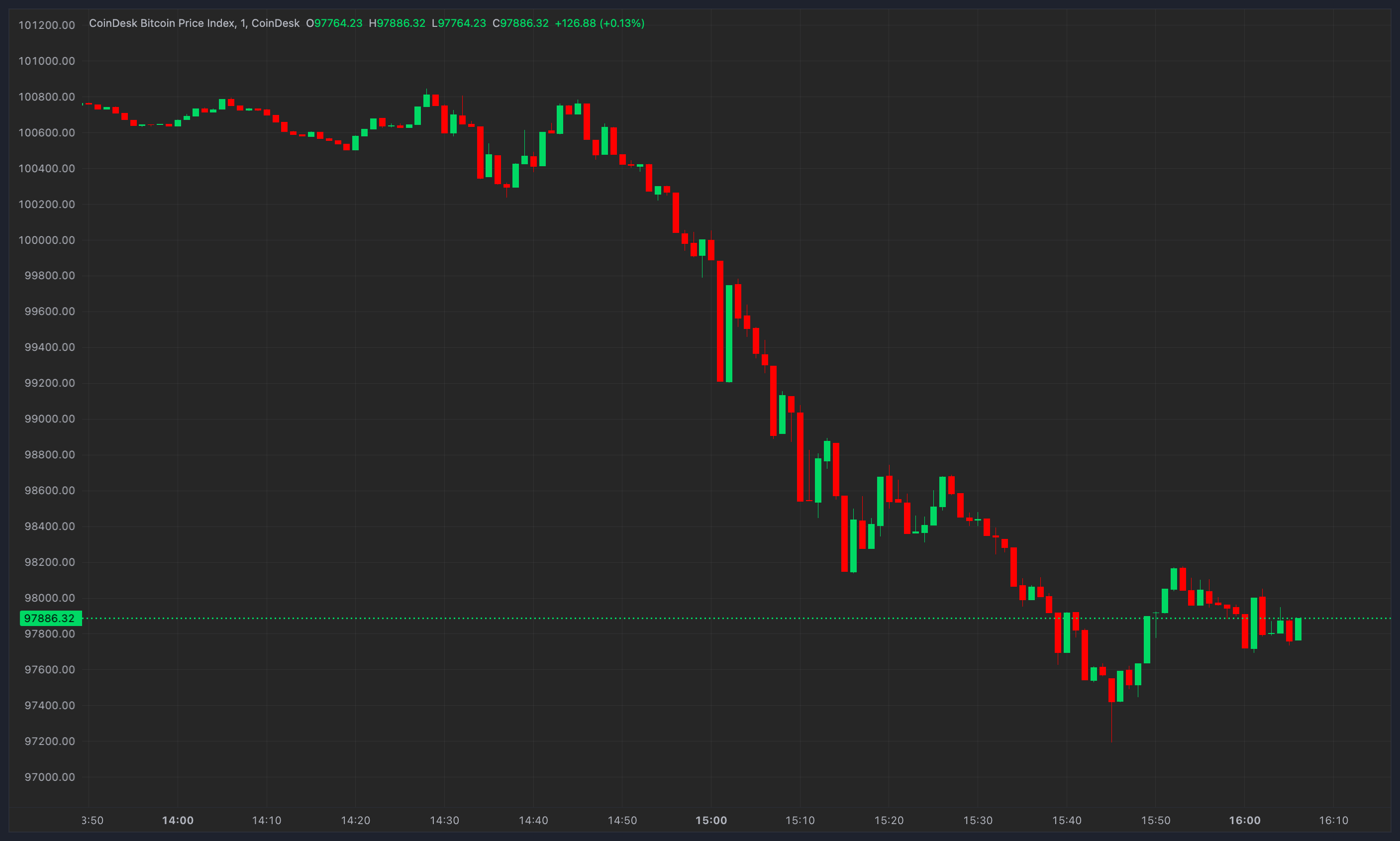No other bear market in crypto history can compare to the severity of the crypto crash of 2022, leading many crypto investors to wonder: “Is crypto dead?” Since the beginning of the year, the total market cap of all digital assets in circulation dropped from $2.30 trillion to $949 billion, a more than -58% drop in the span of roughly 11 months. In other words, the crypto market shed more than $1.35 trillion of its value year-to-date (YTD) – which is more than the entire market cap of tech giants such as Amazon (AMZN) and Tesla (TSLA).
With such poor market performance in our rearview, many are wondering what the future holds. Read along, and let’s find out together.
Why is the crypto market down?
The reasons behind the 2022 crypto market crash can be broadly categorized into two camps – non-crypto-related and crypto-related factors. Let’s begin with the former.
The past couple of years have been very challenging for the world as a whole. We’ve gone from being locked down due to the coronavirus pandemic and subsequent economic shutdown to a high inflation rate environment accompanied by the energy crisis, logistic problems, and geopolitical uncertainty.
Against a backdrop of macroeconomic turmoil, we’ve seen virtually all asset classes lose high double digits since the start of the year, and digital assets have been no exception. In fact, recent economic problems have shown that crypto does exceptionally poorly when the monetary policy is tight, and investments dry up. This reality comes in stark contrast to many crypto experts who repeatedly touted crypto’s resistance to inflation and traditional economic problems as one of its hallmarks.
Shifting to crypto industry-specific reasons, we must highlight the collapse of the Terra ecosystem in May. While crypto prices began their downward slide before May, the collapse of the $60 billion ecosystem exacerbated the negative trend. Moreover, the collapse of Terra led to the bankruptcies of some of the largest crypto firms, including Three Arrows Capital, Voyager, and Celsius, among others.
Historical performance: Crypto assets established new ATHs after every bear market
To better understand where we stand, we must first put this year’s crypto crash into context – pitting it against past bear markets can serve as a great starting point to form general takeaways.
The first Bitcoin bear cycle (Jun 2011 – Nov 2011)
Bitcoin, which started as an idea outlined in a whitepaper written by a pseudonymous author Satoshi Nakamoto in 2008, quickly started gaining traction among the tech crowd and those believing the global financial system is due for an overhaul. However, it didn’t take long for BTC to experience its first massive collapse. Between June and November of 2011, Bitcoin’s market cap – which for all intents and purposes, was the entire market cap of crypto at that point – decreased by more than 90%
The first-ever crypto winter (Nov 2013 – Jan 2015)
By 2013, Bitcoin wasn’t the only game in town anymore. While BTC retained its dominance, coins like Litecoin, Namecoin, Dogecoin, and XRP joined the digital currency club. in October 2013, the FBI shut down Slik Road, a popular dark web platform where users could pay for various goods and services with their crypto. Later on, China announced it was banning Bitcoin. To add salt to injury, the popular crypto exchange Bitstamp got hacked. The negative press surrounding all these developments resulted in more than a year-long bear market that saw the total market cap shrink by roughly 80%.
The 2018 crypto winter (Dec 2017 – Dec 2018)
After the crypto winter of 2015, the digital asset sector saw more investments and technological developments than ever before. We saw the launch of the first-ever smart contract platform Ethereum and the launch of Tether stablecoin. With thousands of crypto projects launching initial coin offerings by late 2017, unfortunately, several scams drained hundreds of millions of dollars from crypto investors. The high-profile case of Bitconnect and a $530 million hack of CoinCheck kickstarted a year-long crypto bear market that led to over 80% losses.
As you can see, cryptocurrency markets have been through some extreme bear cycles throughout their roughly decade-long history. Each time, a large contingent of people marked crypto dead, only for it to return stronger than ever.
Bitcoin, being the oldest and largest currency in the sector, can serve as a good indicator of the general performance of crypto assets after each bearish cycle. Case in point, Bitcoin repeatedly reached new all-time highs after each crypto crash – it surpassed $1,000 after 2011’s bear market, touched $20,000 after the first crypto winter, and nearly hit $70,000 following 2018’s downturn.
Does crypto have a future?
Following each major crypto crash, the industry managed to emerge stronger than before. There is little reason to believe why that wouldn’t be the case going forward, especially when accounting for the pace of development and user growth taking place in the blockchain industry.
The Ethereum Merge, arguably the most consequential upgrade in the history of crypto, took place just three months ago. Per the Ethereum Foundation, the transition from Proof-of-Work (PoW) to Proof-of-Stake (PoS) decreased the network’s electricity consumption by 99.95%.

Total internet users versus total crypto users comparison.
In addition to improvements in energy efficiency, the increase in popularity of various Layer 2 networks, including the Bitcoin scaling solution Lightning Network and Ethereum’s Polygon, for instance, have led to faster and lower cost transactions, and greater usability of decentralized finance (DeFi) products and services.
The pace at which users are favoring decentralized automated protocols over financial intermediaries is very apparent when looking at TVL data. The total value locked of all digital assets deposited on various Layer 1s increased from “just” $600 million at the start of 2020 to $30 billion in October 2022, according to blockchain analytics firm DeFi Llama.
So, is crypto dead?
If history and recent technical advancements serve as any indication, the answer to “Is crypto dead?” is a resounding ‘no’. Both Bitcoin and Ethereum, as well as thousands of other crypto assets, are becoming more popular, not for price speculation reasons but for various Web3 use cases, ranging from personal finance to gaming.
That doesn’t mean that we won’t see a large share of blockchain projects slowly fade away as the industry undergoes more consolidation in the future. However, with more regulations in the pipeline and crypto adoption outpacing internet adoption, the future bodes well for crypto.
Read More: news.google.com









 Fact0rn
Fact0rn  Brett (ETH)
Brett (ETH)  ZBIT•BLUE•BITCOIN
ZBIT•BLUE•BITCOIN  U Coin
U Coin  tomiNet
tomiNet  00 Token
00 Token  Silly Dragon
Silly Dragon  BEAM
BEAM  Dogechain
Dogechain  Forward
Forward  Catana
Catana  Interest Compounding ETH Index
Interest Compounding ETH Index  Trust The Process
Trust The Process  Robonomics Network
Robonomics Network  AgriDex
AgriDex  Radiant
Radiant  Dyad
Dyad  Holdcoin
Holdcoin  Stride Staked Osmo
Stride Staked Osmo  X Community
X Community  Neroboss
Neroboss  Solanium
Solanium  Sharpe AI
Sharpe AI  Elonia Trump
Elonia Trump  Fuse
Fuse  Push Protocol
Push Protocol  PIP
PIP  Luminous
Luminous  Chain Games
Chain Games  Epik Prime
Epik Prime  Bitcoin on Base
Bitcoin on Base  MEMENTO•MORI (Runes)
MEMENTO•MORI (Runes)  Ben the Dog
Ben the Dog  ROACORE
ROACORE  FDREAM
FDREAM  Galaxia
Galaxia  Cult DAO
Cult DAO  KCC Bridged USDT (Kucoin Community Chain)
KCC Bridged USDT (Kucoin Community Chain)  TEH EPIK DUCK
TEH EPIK DUCK  BIDZ Coin
BIDZ Coin  Avarik Saga
Avarik Saga  GPU ai Rich
GPU ai Rich  LightLink
LightLink  Koi
Koi  Seal
Seal  Ispolink
Ispolink  EverValue Coin
EverValue Coin  Shark Cat
Shark Cat  Catcoin
Catcoin